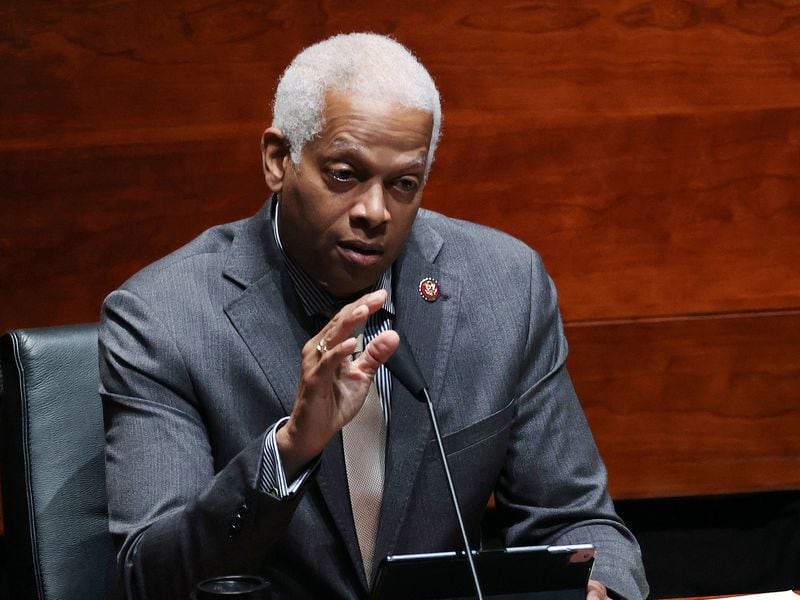Atlanta-based Norfolk Southern’s CEO Alan Shaw was among the witnesses who testified Wednesday at a U.S. Senate committee hearing about the railroad’s toxic derailment in East Palestine, Ohio on Feb. 3.
Here are six things to know about the hearing before the Senate commerce committee:
1. Continued community fears
Misti Allison, who lives in East Palestine and testified at the hearing, gave voice to the concerns many residents have had in the weeks since the derailment.
“Our government told us it was safe to come home. But is it safe? People and animals in my community are sick,” she said during the hearing. “Who do we trust?”
“My 7-year-old has asked me if he is going to die from living in his own home. What do I tell him?” Allison said.
Norfolk Southern said it has provided more than $10 million to 6,000 families and is planning a long term medical compensation fund, a property value assurance program and a longer term water testing program.
But so far, Allison said people in East Palestine are saying “essentially they feel like Norfolk Southern is just offering bread crumbs throughout the community.”
2. Criticism of stock buybacks
U.S. Sen. Sherrod Brown, D-Ohio, who has proposed rail safety legislation in the Senate that would increase the maximum fine for safety violations, among other moves, said in his remarks at the hearing that Norfolk Southern had 579 violations cited in closed cases.
“They paid an average fine of less than $3,300,” Brown said. “It really is a rounding error.”
Norfolk Southern has also been criticized for spending billions of dollars on stock buybacks, which safety advocates say could have been spent to instead improve safety.
When asked during the hearing whether the company would suspend its stock buybacks until it fulfills its assurances to East Palestine, Shaw declined to make such a commitment, and instead said Norfolk Southern spends about a billion dollars a year on safety.
3. Norfolk Southern vague on new rail safety rules
Shaw testified that he supports the principles of certain safety regulations proposed in the Senate rail safety bill. But he stopped short of supporting some measures in the bill such as requiring two-person crews on trains, and would not directly answer which measures Norfolk Southern opposes.
The East Palestine train had two crew members and a trainee on board. But in response to a question about whether he supports a requirement for two-person crews, Shaw said: “I’m not aware of any data that links crew size with safety.”
Sen. Ed Markey, D-Massachusetts, voiced his frustration. “I just get sick of industry executives talking about supporting the principles of regulation while they lobby against common sense regulations like this one behind the scenes.”
U.S. Rep. Hank Johnson, D-Ga., and more than a dozen colleagues wrote a letter to U.S. Transportation Secretary Pete Buttigieg last week urging the DOT to implement stronger rail safety standards.
“Rail companies that amass billions in profit must stop lobbying against common sense safety regulations, such as the implementation of wayside defect detectors or hot bearing detectors that could have made a huge difference,” Johnson said in a written statement.
Credit: Chip Somodevilla via The New York Times
Credit: Chip Somodevilla via The New York Times
4. Unions question safety commitment
Clyde Whitaker, legislative director in Ohio for rail union SMART’s transportation division, called into question railroads’ statements on their commitment to safety.
“My entire railroad career, I’ve listened to the railroads portray a message and image of ‘safety first,’ but I have never witnessed or experienced that,” he said during the hearing. “For years I’ve handled complaints after complaint regarding unsafe practices and unsafe environments.”
“This is the reality of what happens when railroads are primarily left to govern and regulate themselves,” Whitaker said.
Sen. Raphael Warnock, D-Ga., during the hearing told Shaw: “I’m hearing from rail workers that policies around their working conditions are creating safety issues and may have contributed to this accident.”
“I can’t help but see the accident in East Palestine and wonder what would have happened had we, instead of watching this in Ohio or witnessing this, were experiencing it in Georgia,” Warnock said.
5. Were rail safety roll backs a cause?
5. Some rail safety advocates have criticized the Trump administration for rolling back certain safety regulations. It’s true that the Trump administration took actions to loosen some rail safety regulations.
But Sen. Ted Cruz, R-Texas, cited a Washington Post fact check which said “none of the regulatory changes made during the Trump administration at this point can be cited as contributing to the accident.”
6. Call for more cameras
National Transportation Safety Board Chair Jennifer Homendy named several issues that she said should be addressed to improve rail safety. The definition of a hazardous train should be expanded, and certain tank cars should be phased out of hazmat service, she said.
The NTSB investigation of the derailment is ongoing. Homendy said Norfolk Southern has an advanced train control desk in Atlanta, and saw non-critical alerts before the final critical alarm.
“But by that time, the train was in the process of derailing,” she said.
She said the locomotive in the East Palestine derailment had a camera, but “since the locomotive was put immediately back into service following the accident, the data was overwritten. That means the recorder only provided about 15 minutes of data before the derailment and five minutes after.”
“Now is the time to expand” requirements for recorders, Homendy said.
Homendy also said people “deserve to know what chemicals are moving through their communities and how to stay safe in an emergency. That includes responders who risk their lives for each of us every single day. They deserve to be prepared.”







